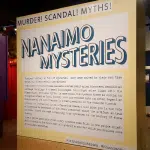
Alarm and Awe Accompany Plans to Resurrect Dodo Birds
Featured in Ripley's Believe It or Not!

Thirty years ago, Jurassic Park hit theaters in a big way, leaving audience members gobsmacked by some of the most lifelike dinosaur images ever to hit the silver screen. Equally compelling were concepts like science run amuck and profound questions about ethics. And who can forget about Ian Malcom‘s foreshadowing line, “Life finds a way”?




